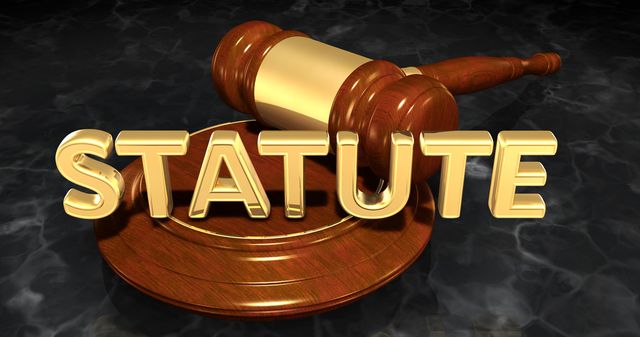1.1.4
The Great Depression
Elections after the Depression
Elections after the Depression
There were five national elections (four Reichstag and one presidential) between 1929 and 1933. Voters turned to extremist parties on both the left and right wings and coalition government became all but impossible.


Difficulty of coalition government
Difficulty of coalition government
- Political parties in Müller's coalition government represented different interest groups with conflicting demands. Parties wanted to protect their voters from cuts in government spending.
- Farmers wanted high food prices, workers wanted low. Businesses that exported wanted free trade, those supplying domestic markets wanted protectionism.
- Müller could not get his finance bill through the Reichstag. He asked Hindenburg to use Article 48, but the President refused. Müller was forced to resign.


Use of presidential government
Use of presidential government
- From March 1930 there was government using presidential decree.
- Chancellor Brüning depended on Hindenburg's use of Article 48.
- This reflects the inability of coalition government to agree on policies.


1928 and 1930 elections
1928 and 1930 elections
- May 1928:
- The Nazis saw the biggest increase from 2.6% of the vote in May 1928 to 18.3%. They were the second biggest party in the Reichstag.
- September 1930:
- The KPD vote rose from 10.6% to 13.1%. The SPD vote fell from 29.8% to 24.5%. The DVP and DNVP saw their vote roughly halved.


1932 elections
1932 elections
- July 1932:
- The Nazis saw a dramatic rise in support, becoming the largest single party in the Reichstag, with 37.4% of the vote.
- The KPD vote rose to 14.5%. The SPD vote fell about 25%. Apart from the Zentrum, all other parties saw their vote fall especially narrow interest parties.
- November 1932:
- The KPD vote rose to 16.9%, the DNVP from 6.2% to 8.9% and the DVP from 1.2% to 1.9%.
- The Nazis’ vote fell to 33.1%.


1933 election
1933 election
- March 1933:
- Hitler was already Chancellor. All parties’ votes declined but the Nazi party whose vote was 43.9%. Anti-Weimar parties controlled the Reichstag.
Governments After the Depression
Governments After the Depression
Müller and Brüning's coalition governments were fragile and the Chancellors struggled to get through their policies. Eventually, Article 48 became the only way to circumvent the internal divisions within the Weimar governments.


Müller's government
Müller's government
- Political parties in Müller's coalition government represented different interest groups with conflicting demands. Parties wanted to protect their voters from cuts in government spending.
- Farmers wanted high food prices, workers wanted low. Businesses that exported wanted free trade, those supplying domestic markets wanted protectionism.
- Müller could not get his finance bill through the Reichstag. He asked Hindenburg to use Article 48, but the President refused. Müller was forced to resign.


Brüning's government
Brüning's government
- Brüning from the Zentrum Party succeeded Müller.
- He was supported by the army and leading German industrialists.
- Brüning used Article 48 to pass his finance bill.
- Brüning continued in government, despite massive gains by the Nazi party in September 1930.
Historical assessment
Historical assessment
- Feuchtwanger (1995):
- ‘Brüning was the last chancellor to govern with any kind of constitutional legitimacy.’
- Bracher:
- ‘[Brüning] was not … the last chancellor before the break-up of the Weimar Republic, but the first chancellor in the process of destroying German democracy.’
- Hite and Hinton (2000) ‘Brüning lost office…because he had lost President Hindenburg’s support.’
- Mommsen (1991) blames Brüning for deliberately worsening the economic crisis and thus creating the conditions that only Hitler understood to exploit.
Economic assessment
Economic assessment
- The economist Peter Temin (1991) argues that the German government did not handle the economy well after the Wall Street Crash.
- Chancellor Brüning's cabinet had 'deflationary impulses'. They tried to reduce government spending by raising taxes and cutting benefits.
- Reichsbank (German central bank) reserves fell below requirements and they couldn't borrow from any banks or central banks in the world. So, they raised interest rates. This worsened the economic situation as anyone with debt had to pay a higher rate of interest.
1Political & Governmental Change, 1918-1989
1.1Creation & Collapse of Weimar, 1918-1932
1.2Nazi Dictatorship, 1933-1945
1.3Return to Democratic Government, 1945-1989
2Opposition, Control & Consent 1918-1989
2.1Opposition to Government, 1918-1989
2.2Controlling the People, 1918-1989
3Economic Developments & Policies, 1918-1989
3.1Reacting to Economic Challenges, 1918-1932
3.2Controlling the Economy, 1933-1945
3.3Creating the Social Market Economy, 1945-1989
4Aspects of Life, 1918-1989
4.1Attitudes Towards Women, 1918-1989
4.2Education & Cultural Developments, 1918-1989
5Historical Interpretations
5.1Influence of German History
5.2Hitler & Foreign Policy
5.3Contribution of Other Nations to WW2
5.4Reasons for Invading Poland
Jump to other topics
1Political & Governmental Change, 1918-1989
1.1Creation & Collapse of Weimar, 1918-1932
1.2Nazi Dictatorship, 1933-1945
1.3Return to Democratic Government, 1945-1989
2Opposition, Control & Consent 1918-1989
2.1Opposition to Government, 1918-1989
2.2Controlling the People, 1918-1989
3Economic Developments & Policies, 1918-1989
3.1Reacting to Economic Challenges, 1918-1932
3.2Controlling the Economy, 1933-1945
3.3Creating the Social Market Economy, 1945-1989
4Aspects of Life, 1918-1989
4.1Attitudes Towards Women, 1918-1989
4.2Education & Cultural Developments, 1918-1989
5Historical Interpretations
5.1Influence of German History
5.2Hitler & Foreign Policy
5.3Contribution of Other Nations to WW2
5.4Reasons for Invading Poland
Unlock your full potential with Seneca Premium
Unlimited access to 10,000+ open-ended exam questions
Mini-mock exams based on your study history
Unlock 800+ premium courses & e-books